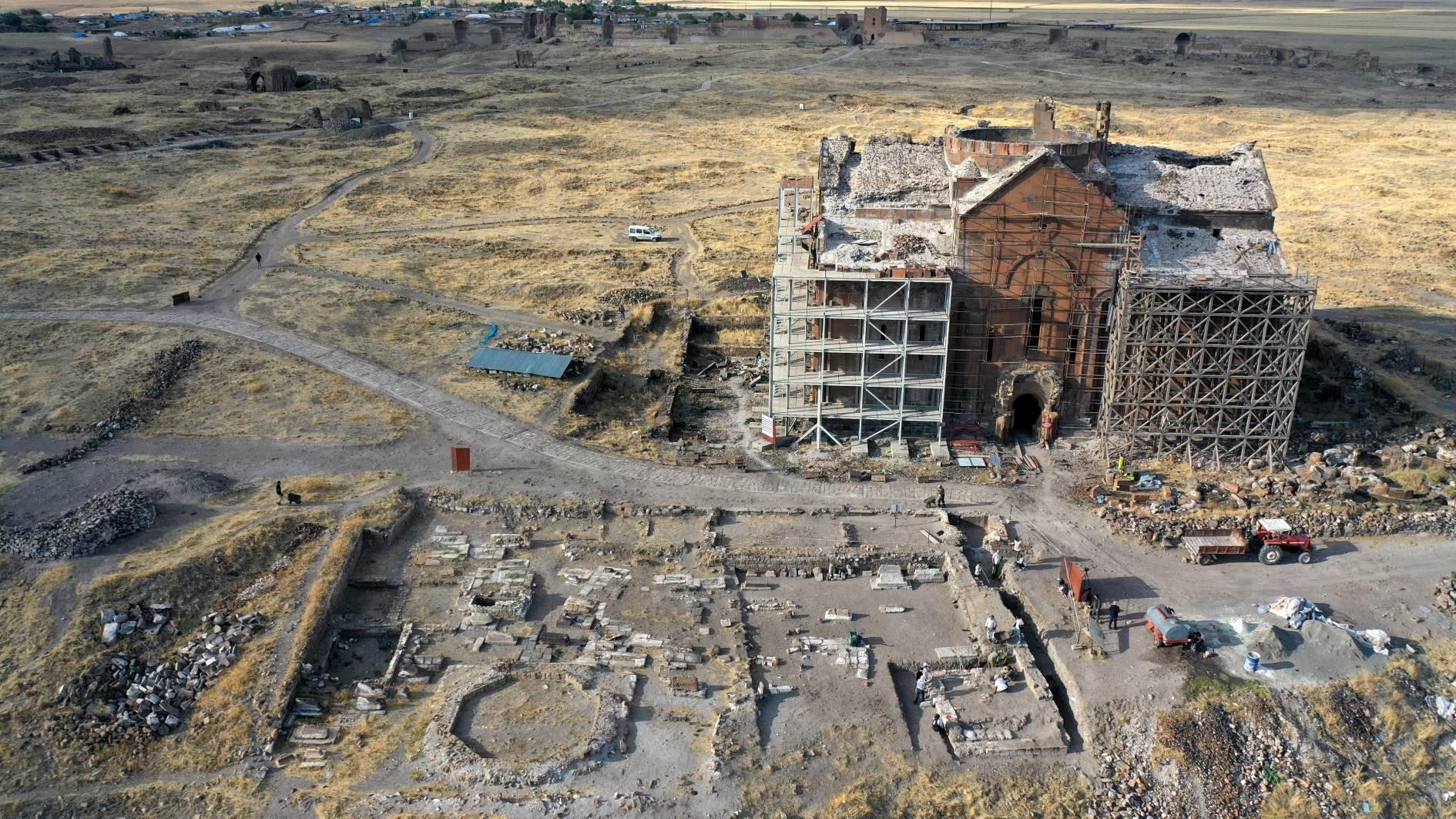
Excavations at the Ani Ruins, which are on UNESCO’s World Heritage List, have brought to light the remains of a Seljuk-era mausoleum.
The excavations are being carried out at five different points to find immovable and movable artifacts at the ancient site.
Ani, located in the eastern province of Kars and known as the first gateway from Central Asia into Anatolia and the Caucasus, hosts Turkish-Islamic architectural works dating back to the 11th and 12th centuries.
Throughout history, the site was under the rule of the Bagratid dynasty, Byzantines, Great Seljuks, Georgians, Mongols, Ilkhanids, Karakoyunlus, Akkoyunlus and the Ottoman Empire, and was a place where Christians and Muslims lived together.
The excavations, conducted in cooperation with the Culture and Tourism Ministry and Kafkas University, aim to unearth historical structures and artifacts buried underground. A team of 130 people, including art historians, archaeologists, architects and restoration specialists, is working at the site.
The remains of a Seljuk mausoleum were unearthed during excavations in front of the Fethiye Mosque (Ani Cathedral), where Sultan Alparslan is said to have performed the first Friday prayer in Anatolia. The mausoleum, which has a brick body, is currently being completely excavated.
Associate Professor Muhammet Arslan, head of the Ani excavations, told the state-run Anadolu Agency that excavations began in April and will continue until the end of December.
“At the moment, we are working at five different points in the field, and perhaps the most important of these is the Seljuk cemetery. We first opened this area in the 2021 excavation season. Based on surface findings, we suspected it might be a cemetery, and our excavations confirmed this,” he said.
Arslan stressed that they are working in a highly significant area. “This is a site that we can describe as the first Turkish-Islamic cemetery in Anatolia. Since it is located only about 30 meters southwest of the Fethiye Mosque, it is in fact the first burial ground in Anatolia. In previous seasons, we unearthed a Seljuk mausoleum built on a square base with an octagonal body, along with tombstones with sarcophagi and burial chambers of the akıt type, which we frequently see in Central Asia and which were adapted in Islamic Anatolia,” he explained.
Very first example of mausoleum architecture in Anatolia
Arslan noted that this year, more tombstones with sarcophagi have been uncovered. “More importantly, we reached the remains of a Seljuk mausoleum with a brick body,” he said.
“This may well be one of the earliest examples of mausoleum architecture in Anatolia, perhaps even the very first, because this was the first place Sultan Alparslan conquered in Anatolia in 1064. With this conquest, the cemetery was established immediately, and we can say that the Seljuks built their first brick mausoleum here in Ani, in this cemetery, just as they had done in pre-Anatolian geographies, particularly in Iran.”